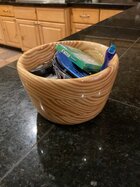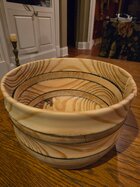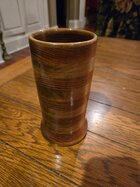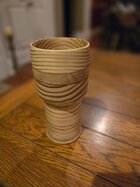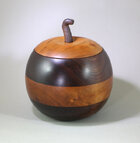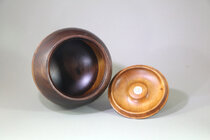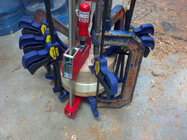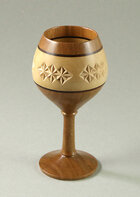Hello from Madison, MIssissippi.
I began turning on the Harbor Freight 12” lathe about 6 years ago. Mainly bowls, mugs, cups, and a few boxes made out of glued up layers of cut lumber. Also a few tool handles. I tend to just give them away to family and friends. I have lost all the pictures of my previous turnings many phones ago and have only a few items left lying around the house. Nothing special, but I enjoy making this type of item and my family and friends like the, as well. My favorite part is the final coating to see how the wood grains will pop out. I was hoping to get a table saw soon so that I could blank up some more intricate patterns.
Alas, my lathe motor finally gave up. It’s fried and the local electric motor repair shop said it would be cheaper to just buy another. But when looking at the price of a new one I found that it would likely be more cost effective to purchase a new HF lathe. She had a good run and was a great bang for the buck. HF made sense when I wasn’t sure if I would really take to the hobby, but now I am sure. So with that in mind, I will be in save mode for a good product upgrade, looking at a couple options both new and used.
Also, what forum is the best place to discuss lathes and hardware? I have questions and seek advice.
The big bowl shown here is broken, the cat knocked it off the shelf where it was sitting. Due to the springy nature of the thinner wood, it wouldn’t fit back together. It’s a shame, I liked it.
The smaller bowl was the 2nd piece I made. The first I dropped and it shattered long ago.
The darker cup was my first attempt and everyone liked it so I made many more with variations here and there. The lighter cup was my last piece before the lathe gave out. The glue failed and it’s coming apart at the seam.
I often coat them in Amazing Clear Cast from Hobby Lobby.
I began turning on the Harbor Freight 12” lathe about 6 years ago. Mainly bowls, mugs, cups, and a few boxes made out of glued up layers of cut lumber. Also a few tool handles. I tend to just give them away to family and friends. I have lost all the pictures of my previous turnings many phones ago and have only a few items left lying around the house. Nothing special, but I enjoy making this type of item and my family and friends like the, as well. My favorite part is the final coating to see how the wood grains will pop out. I was hoping to get a table saw soon so that I could blank up some more intricate patterns.
Alas, my lathe motor finally gave up. It’s fried and the local electric motor repair shop said it would be cheaper to just buy another. But when looking at the price of a new one I found that it would likely be more cost effective to purchase a new HF lathe. She had a good run and was a great bang for the buck. HF made sense when I wasn’t sure if I would really take to the hobby, but now I am sure. So with that in mind, I will be in save mode for a good product upgrade, looking at a couple options both new and used.
Also, what forum is the best place to discuss lathes and hardware? I have questions and seek advice.
The big bowl shown here is broken, the cat knocked it off the shelf where it was sitting. Due to the springy nature of the thinner wood, it wouldn’t fit back together. It’s a shame, I liked it.
The smaller bowl was the 2nd piece I made. The first I dropped and it shattered long ago.
The darker cup was my first attempt and everyone liked it so I made many more with variations here and there. The lighter cup was my last piece before the lathe gave out. The glue failed and it’s coming apart at the seam.
I often coat them in Amazing Clear Cast from Hobby Lobby.
Attachments
Last edited:

